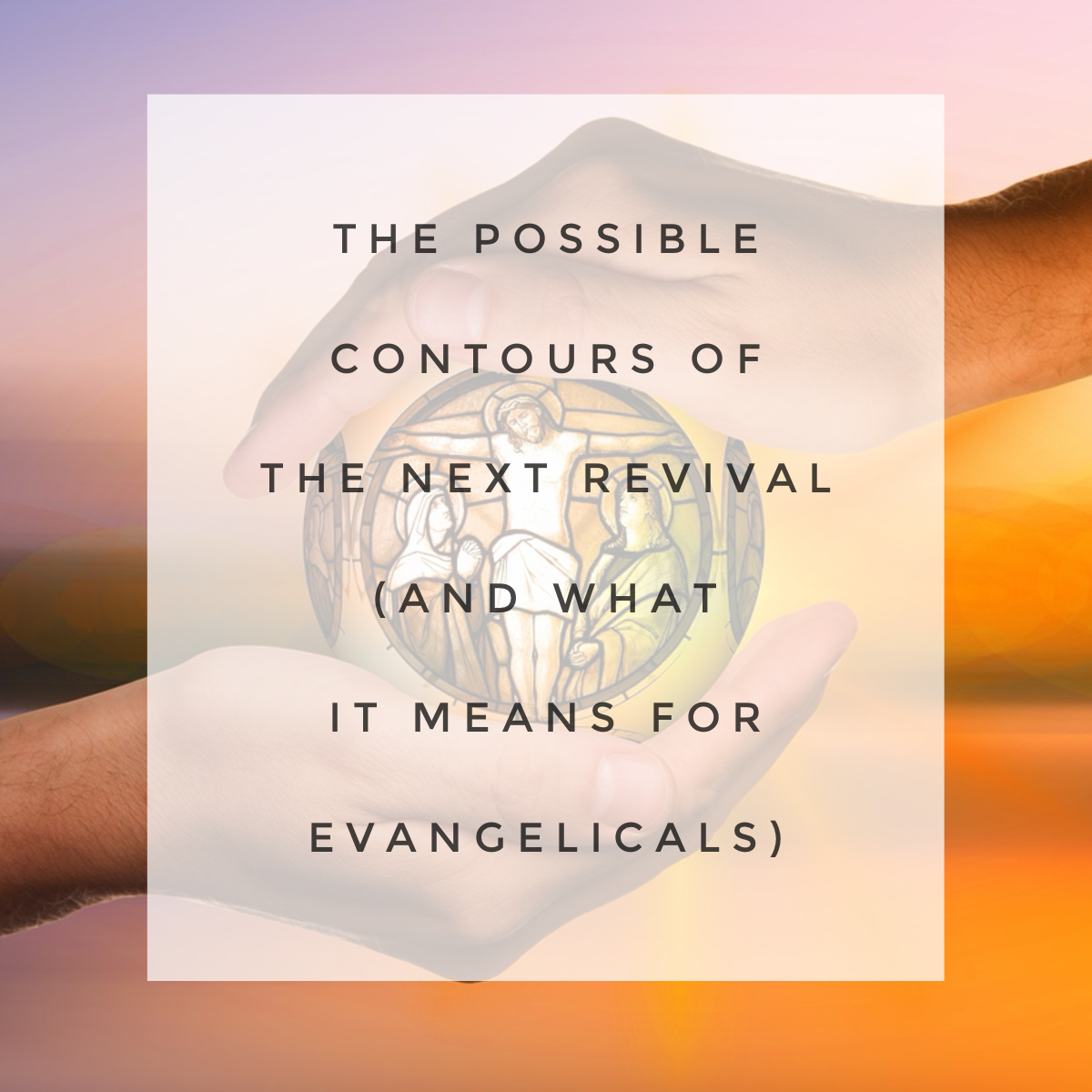The Possible Contours of the Next Revival (and What It Means for Evangelicals)
A quiet pattern is forming across the cultural landscape. It is not loud, centralized, or officially announced. But it is visible for those who know how to look. Among younger generations, especially Gen Z, there is a renewed openness to faith. Not in the way their parents experienced it. This is something more symbolic, more embodied, more ancient.
We are seeing the return of spiritual signals in unexpected places. Public faith expressions are resurfacing in government offices, college campuses, and social media platforms. There is growing interest in liturgy, Scripture, identity-rooted practices, and spiritual formation that connects deeply with everyday life. These signals, while still small, reflect a hunger for meaning, moral clarity, and community in a time when institutional trust continues to erode.
Strategic foresight calls these H3 signals. In our framework, H3 refers to long-term, visionary possibilities that may not fully mature until 2040 or beyond. Though subtle today, this spiritual constellation may become clearly visible and strongly trending by the mid-2030s. When viewed together, these weak signals raise the possibility of a future spiritual renewal. If something like a revival is on the horizon, it may take on unfamiliar forms.
This prospect also aligns with broader historical patterns described by cyclical theorists. In First Turning language, this moment could mark the beginning of a new civic order. Cliodynamics would frame it as a post-crisis period of moral reordering. Panarchy theory would suggest an adaptive phase, where spiritual ecosystems regenerate after collapse. Pendulum theory would point to a cultural return to values rooted in community, meaning, and coherence.
So what might the next revival look like?
Less tent, more table
Rather than stadium events and mass altar calls, this revival could unfold in homes, small gatherings, and sacred conversations. Hospitality, not hype, would lead.
Ancient patterns, emerging language
Creeds, liturgical prayers, and Scripture readings might find new life alongside podcasts, short-form devotionals, and creative spiritual practices.
Symbols could matter again
From crosses to candles to handwritten journals, physical symbols may carry new spiritual weight. Meaning might be expressed through visible acts and chosen rituals.
Public faith through ordinary practice
This revival would likely not be politicized. It could be expressed through service to neighbors, vocational integrity, and relational depth. Discipleship might look like daily faithfulness, not just weekend participation.
Spiritual formation over programs
Mentorship, disciplines, confession, and shared life could take precedence over performance and production. Churches may function more like schools of resilience than content distributors.
Decentralized influence, not institutional dominance
Micro-communities and relational networks may emerge where large systems have stalled. Influence could grow through credibility and compassion rather than control.
Implications for Evangelical Missions and Ministry
If these contours take shape, evangelical missions could shift from scaling strategies to deepening presence. Cross-cultural ministry may move at the speed of trust, grounded in hospitality rather than sending infrastructure. Missionaries might become formational leaders more than organizational representatives. Ministries would need to prioritize resilience, authenticity, and local embeddedness.
This vision reflects what Jesus called His disciples to do. He did not only say convert the world. He also said, “teaching them to observe everything I have commanded you. And remember, I am with you always, to the end of the age” (Matthew 28:20, CSB). What is emerging does not appear transactional. It leans away from performative faith and platform-based spirituality. It points toward depth, consistency, and practiced obedience.
What this could mean for Evangelicals
Evangelicals could find themselves recovering ancient tools of formation to shape lifelong faithfulness. Creeds, rhythms, disciplines, and communal worship might take on new significance. Churches could become places of habit formation, not just program delivery. The Gospel would be seen not only as a message to believe, but as a way of life to be embodied.
Ministries that embrace these possibilities and invest in formation may be better positioned to serve emerging generations. Those that rely on persuasion without transformation may struggle to connect. Missions and ministry will remain essential, but the approach may need to reflect patience, presence, and lived wisdom.
I am not predicting revival. I am observing signals that suggest a possible long-term spiritual shift. It’s one plausible trajectory, not a certainty. It is a possible future, one of many that could unfold depending on how today’s signals develop. These are not trends to exploit. They are early signs to discern. What comes next is not guaranteed. But the conversation is worth having.
Three scenarios to consider:
What if the next revival is slow, relational, and rooted in practices that seem too small to measure, yet too real to ignore?
What if the hunger for meaning is misdirected into vague spirituality without the clarity of the Gospel?
What if a generation reclaims the richness of the faith with courage, creativity, and a quiet determination to walk closely with God?
As a foresight practitioner, I do not speak for what the Church must do. I map signals, trends, and drivers that may shape what comes next. The forms described here are not predictions. They are possibilities. It is up to evangelical leaders, churches, and ministries to interpret what they see and respond with faithfulness.
Keep exploring the signals, trends, and drivers shaping the future. Take the next step by engaging your ministry team in a conversation about what this future could mean for your context through Incite Futures Labs from Forbes Strategies. We help leaders anticipate change, navigate complexity, and build their preferred future. Let’s collaborate!

